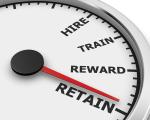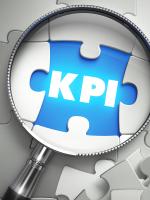CHICAGO — Over the past few years, the drycleaning industry has seen its fair share of changes. From new technology to workplace transformation to evolving customer behaviors and demands, cleaners have been forced to navigate into new, sometimes uncharted waters to find success.
For many, this has meant changing the very model of their business, setting aside what worked in the past to adopt new strategies to serve their customers’ current needs and keep them loyal.
The Changing Shape of Dry Cleaning
“We’ve been seeing a lot of changes — in the industry, in consumer behavior, in the manufacturing materials, and so on,” says Bob Barry, president and CEO of the ZIPS Cleaners network of drycleaning stores. “Consumer behavior, specifically working from home, certainly changed. When no one was leaving the house, everybody got much more comfortable using the delivery model.”
Barry also notes a changing garment and fashion industry, which has increased its focus on wash-and-wear and wrinkle-free garments.
“Because of the garments people were actually wearing, working from home and shifting to more casual attire,” he says, “the home washer and dryer became much more competitor than it has ever been serving the garment care industry.”
Today’s consumers don’t behave in the same way as they did just a few years ago, says Christopher White, executive director of the consulting firm America’s Best Cleaners (ABC). Cleaners need to understand this and incorporate it into their business model.
“The drycleaning industry has seen a shift toward more responsive and personalized services that meet the customer where they are physically and available in their schedule,” he says. “Successful cleaners are those who have remained nimble, continuously adapting their strategies to embrace technologies like 24/7 kiosks and on-demand routing for pickup and delivery services while also investing heavily in updated process technologies to maintain labor costs and productivity.”
This evolving behavior has also forced many dry cleaners to reexamine one of the most basic elements of operating a business.
“Location is still relatively important,” he says, “but it doesn’t carry the weight that it did pre-COVID, or even 10 years ago.”
While the last few years have been challenging for individual cleaners, the industry as a whole is healthier than it has been for decades, says Kermit Engh, owner of Fashion Cleaners in Omaha, Nebraska, and the managing partner of Methods for Management (MfM), a consulting firm for the drycleaning industry.
“I say that because COVID removed poor operators from the industry, and, as a result, only the healthy ones remained — and I actually don’t think we’re done,” he says. “I think we’ll see the contraction of the number of operators continue for another year and a half.”
Outstanding obligations is the reason Engh gives for his prediction: “Virtually everybody is required to personally guarantee the leases that they have on what they rent, and even a poor operator can’t get out of that. So, they’ve continued to remain open just to be able to pay their rent. But when that next renewal comes up, they’ll be done. As a whole, though, the people I come in contact with are in very good shape right now.”
Barry agrees with Engh’s assertion that strong businesses have emerged stronger from the challenges of the past few years.
“We had to raise prices because of labor factors and material costs,” he says, “but from a sales standpoint, we’re back to where we were in 2019. It’s actually even slightly above that. We’re definitely seeing things bounce back. We’re up about 7% from last year’s numbers. We’re also seeing the trend of people going back into the office, and I think that’s only going to improve in 2024.”
Come back Thursday for Part 2 of this series, where we’ll look at what is working for successful cleaners today.
Have a question or comment? E-mail our editor Dave Davis at [email protected].
































































